
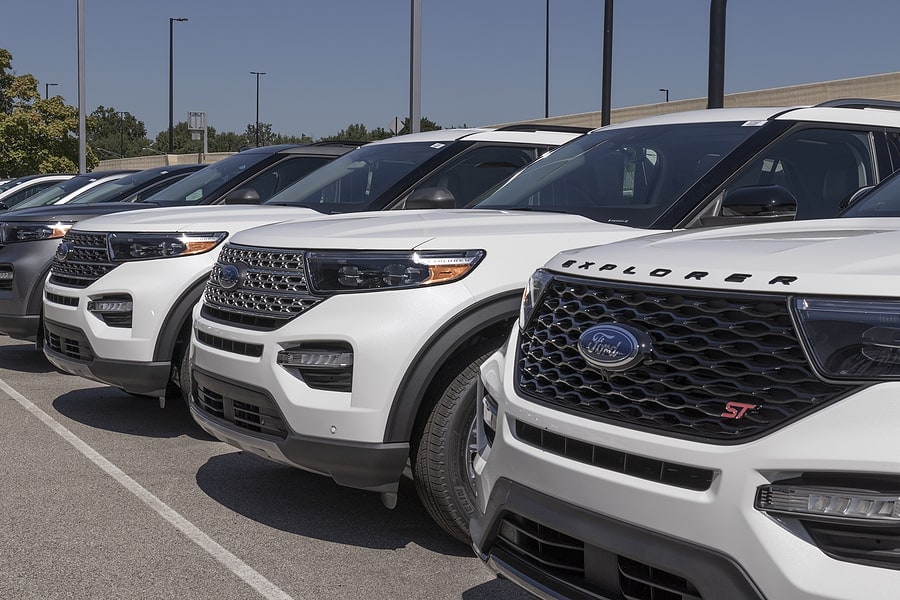
Buying a new car requires a lot of decisions. It’s important to go into the buying process with a clear understanding of what you need and want. One of the most crucial choices you must make is purchasing a brand-new car or exploring used options.
While a new car comes with unique perks, a used vehicle comes with its advantages and shouldn’t be overlooked. But when it comes to used cars, how do you know if you’re purchasing a quality vehicle or one that should be avoided? After all, no one wants to buy a used car with problems.
Just because you’re buying used doesn’t mean you must buy in the dark. Certified pre-owned cars, or CPOs, are a great option if you want a used vehicle with a little peace of mind. If you’re asking yourself, are certified pre owned cars worth it? The answer can be – yes!
What Are CPO Cars or Certified Pre Owned Cars?
You may wonder what makes a car certified pre owned. As the name implies, CPO cars are used cars that manufacturers have certified. In other words, these cars have been checked for any potential problems and passed a thorough, multipoint inspection. This means a CPO vehicle is a safe bet for a higher quality used car if you are searching through used cars.
Is A Certified Pre-Owned Car Just Another Name for A Used Car?
The short answer is “no.” Indeed, all CPO cars are technically “used cars” because a previous owner has driven them. However, buying a used car doesn’t mean you are automatically purchasing a certified one. For a car to be designated CPO, it must pass a series of requirements set in place by car manufacturers. If it doesn’t qualify, it’s simply a used car.
What Are the Benefits of Buying A Certified Pre-Owned Car?
-
A certified pre-owned car has passed a rigorous inspection.
If you’re in the market for a used car, your first concern is probably quality. If a car has been driven by a previous owner – or multiple owners – how do you know if it’s a worthwhile investment?
A CPO vehicle can provide a little peace of mind when finding a high-quality used car. They’re usually recent models – generally, you can expect a CPO car to be less than five years old. CPO vehicles are screened for any recent accidents or major problems that would impact functionality. They also pass multipoint inspection tests, and any potential issues are repaired.
-
Certified pre-owned cars typically have lower mileage than regular used cars.
Another challenge of buying used is mileage. No one wants to put money into a car driven into the ground. You want a vehicle with plenty of life to get you from A to B.
One of the great things about CPO programs is that they have specific requirements when it comes to mileage. So, CPO vehicles need to be relatively new(er) cars with lower mileage – for instance, less than 60,000 miles.
-
Buying a certified pre-owned car usually comes with a warranty.
It never hurts to have some extra security when buying a used car. A typical car warranty can help with regular wear and tear. But CPO car buyers may wonder: do certified pre owned cars come with warranty?
The answer is yes; these cars come with factory warranties. Usually, these are add-ons to the car’s original warranty. In other words, if the car has a year or two left of the original warranty, the certified pre-owned warranty will take up where the original expires. What they cover may vary, depending on your car, so read them carefully.
-
Purchasing a certified pre-owned car often comes with additional benefits.
No one would say no to extra benefits. Buying a CPO car can often include some surprisingly helpful add-ons, depending on the program.
You might be offered free roadside assistance, satellite radio trials, discounted oil changes, or other car-related perks. Again, you always want to read the fine print on these. But it’s worth exploring the advantages if they could be helpful to you.
Are you looking for a certified pre-owned vehicle? Contact us at Allways Atascosa to see what we can offer. We’re happy to help you find the right used car.
Electric Cars: The Future of the Automotive Industry
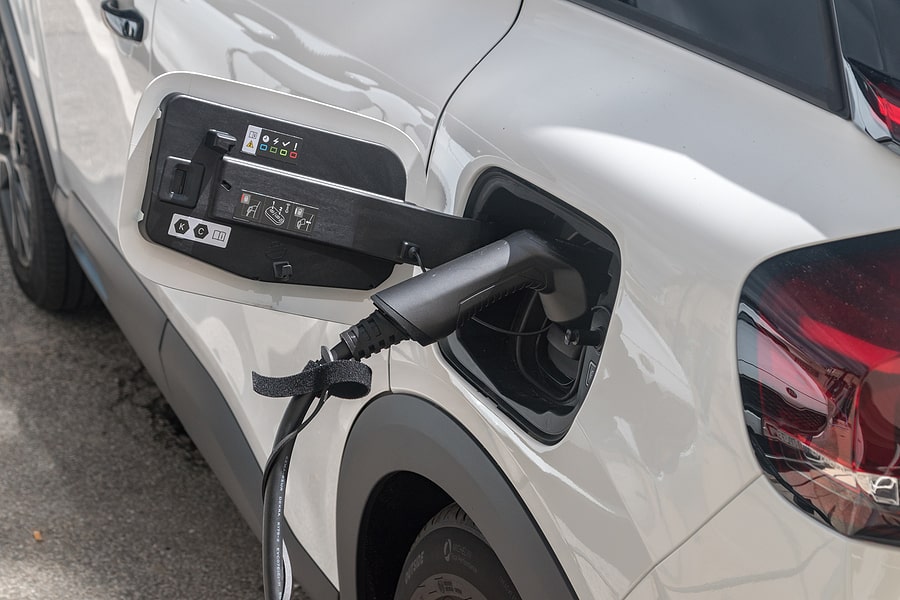
Some of us are old enough to remember the late 90s and the early aughts when it seemed like the electric car was on the rise and maybe even the next big thing. What happened next? Well, electric cars didn’t quite make the push to popularity that some would have guessed and hoped, but that is certainly changing now. While it might seem small, the Bureau of Labor Statistics shows that sales of electric cars went from 0.2 percent of all cars in 2011 to 4.6 percent in 2021. Optimistic projections show electric car sales could hit 50 percent by 2035.
Several states have already committed to banning the sales of electric cars by the year 2035. Car chargers are popping up everywhere, especially in urban areas. You see more and more commercials for electric cars. So, are electric cars the future of the automotive industry? Well, it’s only a projection, but current trends must lead you to conclude that the answer is a resounding yes.
Take A Look at What’s Inside
The first thing we should discuss when discussing electric cars is electric vehicle features. We know the first one—the big one—is that electric cars don’t use gas, but what else about electric vehicles makes them so desirable to the public? After all, we’ve been using gas-powered vehicles for as long as cars have been around. Electric vehicles have some heavy lifting to do if they are going to win over the general public.
But the good news? Electric vehicles are up to the task.
For many, having to charge a car or vehicle seems like a hassle, but these vehicles were designed so that you could do it on your time. Most electric car models come with built-in timers so that the charging happens on your schedule.
For example, if you need your vehicle fully charged by 9 a.m., you have a timer in the vehicle that allows you to do this. Or, if you know you only need a 60 percent battery for your trip, you can preset the charge to save money.
Speaking of saving money, you can also preset the charge so that it happens at certain times of the day. Electric companies generally charge different rates at different hours, so if you set your car to charge at midnight, you will likely save money.
Skip The Gas Station
This is one of the great electric car advantages, but have you thought about what it means? When you buy an electric vehicle, you are likely to install a charging port at home (80 percent of all electric car charging happens at home) or have one at your workplace. This means that whenever you go from here to there, you will never stop at a gas station again unless you need snacks. Saving money is great, but saving time is a huge deal in today’s world, where people are getting busier and busier.
Comfort In More Ways Than One
One of the neat features of electric vehicles is that you can set the climate for what you want it to be when you get in the car. So, next time it is freezing out, you won’t have to run out in the dark to turn the car on to let it heat up. Simply check the weather the night before and set your vehicle to how you want it to feel in the morning.
But that’s only one way that these cars are comfortable. How about the fact that you are already comfortable with the interface? You see, the control panel in most electric vehicles will remind you a lot of your smartphone. These touchscreen displays let you see your battery level, range, and other conditions. And with all that, we haven’t even mentioned that electric vehicles are quieter, have quicker acceleration, and their engines don’t go through as much wear and tear as gas-powered vehicles.
Are electric vehicles the automotive industry’s future? It sure seems like it. And don’t forget one of the biggest EV benefits: they’re good for the environment.
Ready to join the electric car revolution? Say goodbye to gas stations, enjoy the comfort of setting your car’s climate ahead of time, and save money with preset charging times. Visit Allways Atascosa to explore electric vehicle options and take the first step toward a more environmentally friendly future. Contact us today to learn more.
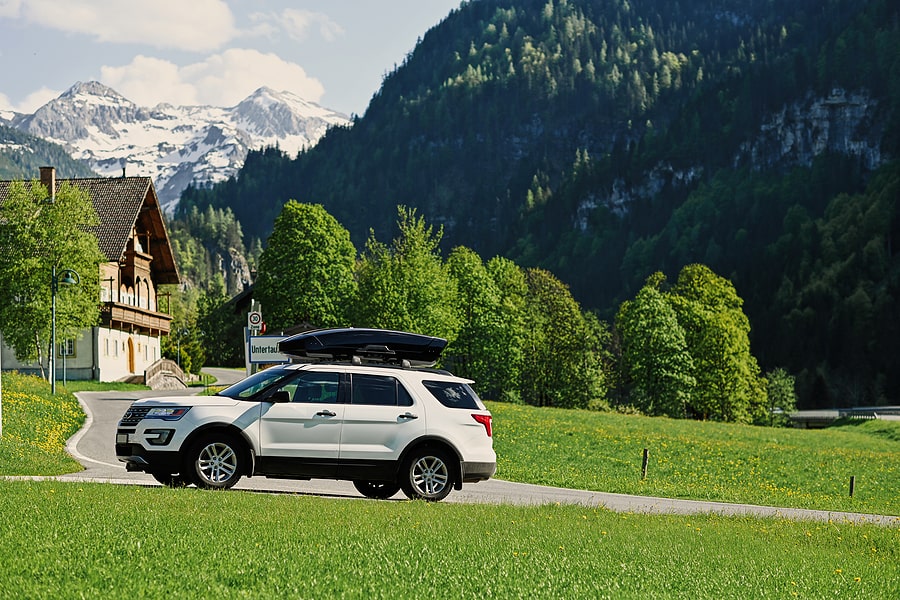
Purchasing a new car is a significant investment. It’s exciting, but it’s also nerve-wracking. A car is one of the largest expenses you’ll ever make, along with purchasing a home. And there’s so much to consider. So, how do you ensure you are making the right choice? We are here with five tips for buying a car to help you ensure you have the perfect car for your lifestyle; whether you are considering the wear and tear on your car from where you live, determine the type of vehicle that best suits your needs lifestyle.
-
Avoid Overdoing It
Buying a new car is exciting. So exciting that many people might want to spend just a little beyond their means to get the car of their dreams. However, going into a financial burden for the car of your dreams can turn it into the car of your nightmares.
One of the best things you can do to figure out how to decide what car to buy is thoroughly review your budget. It may be less exciting than springing for the new Bugatti, but you will be happier.
And when we say to thoroughly go over your budget, we mean that you want to consider all the expenses of the car you buy. How much will it cost for gas? How much will the insurance be? These are very important questions to consider.
-
Live Your Life
A great question to ask yourself when buying a car is, “Which car is right for me?” It’s a great question because you want to ensure that the car you buy fits your lifestyle. Here are some advantages:
- Helps you identify your specific needs and priorities in a car.
- Ensures that the car you choose fits into your daily routine and supports your lifestyle.
- Helps you avoid buying a car that looks great but doesn’t meet your practical needs.
- Enables you to choose a car that enhances your lifestyle and makes it easier to pursue your passions.
- Helps you avoid regrets or dissatisfaction with your purchase because the car you chose doesn’t support your lifestyle.
Do you go on a lot of long road trips? If so, you’ll want something comfortable and get great gas mileage. Do you live in a part of the world that gets a lot of snow? You might want more clearance and a 4-wheel drive to withstand the weather. Families will want cars with more room. Contractors generally drive trucks. You want to ensure that the car you end up with will support your life.
-
Take it for a Spin
One of the best tips for buying a car is to always test drive it first. Honestly, it’s one of the perks and the most fun parts of buying a new car. How often do you get to try out different vehicles?
You’ll want to consider several things while doing your test drive. Of course, you’ll pay attention to how the vehicle drives and handles, but you will also want to look at other peripheries. If you are a music lover, take note of the sound system. Are there enough drink holders? How comfortable is the car?
By test-driving a car, you’ll get a great feel for what you love about it and, maybe more importantly, what you don’t love about it.
-
Keep Your Options Open
Maybe you’ve had your old car for a while and see a model you love. You’ve been watching it for a while, just planning on the day that you can buy it. But here’s the thing: that dream car might not be the best car for you.
It’s best to have options. So, if you have a dream car, do some research. Look up other models that are like what you have been looking at. You never know; you might find something more of a dream car than your dream car could have been. Here are some advantages of considering several makes and models before making a purchase:
- Considering several makes and models will give you a wider range of options.
- This approach can help you find a car that best fits your lifestyle and budget.
- You’ll have the opportunity to compare features, pricing, and customer reviews before making a decision, which can lead to a more informed purchase.
-
Don’t Rush It
Buying a car is exciting, but don’t let that excitement lure you into a quick decision. Remember, you want to have this car for as long as possible. So, if you have the time to make the decision, take the time to make that decision.
Follow these tips, and the next time you ask yourself, “What vehicle should I buy?” you’ll be certain you are making the right decision. Contact us today at Allways Atascosa to schedule a test drive and find the perfect car to fit your lifestyle.
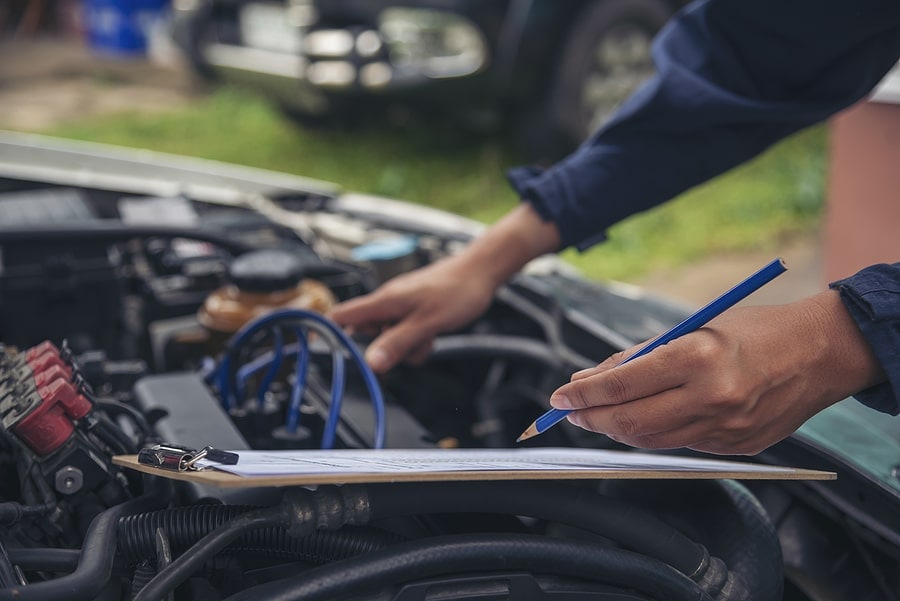
Our cars do a lot for us. Whether we’re taking a short journey to the grocery store or a long road trip to visit family, we rely on our vehicles to get us where we need to go – and to keep us safe at the same time. And we also know that cars can’t keep going without a little help from their owners.
It’s common to visit the mechanic when big issues pop up and keep our vehicles from running smoothly. But regular, preventative maintenance on vehicles is equally important. Why? It’s a key part of keeping those major problems from arising in the first place.
Regular car maintenance should be a priority, not an afterthought. With a regular car maintenance routine, your car will be useful to you for many years.
What Is Regular Car Maintenance?
Standard car care means making routine updates to different parts of your vehicle to keep it running smoothly. You can find and follow a car maintenance guide for your specific vehicle from your vehicle’s manufacturer, but most cars will benefit from the same general care.
Some of the most important car maintenance items include:
- Changing car oil
- Changing air filters
- Checking tire pressure and tread
- Rotating your tires
- Checking your car’s warning lights
- Re-filling windshield wiper fluid and replacing windshield wipers
- Checking belts and hoses for cracks
- Keeping all fluid levels at the proper amount
- Checking brake and turn signal lights
- Washing and waxing your car
- And more!
Benefits Of Regular Car Maintenance
-
Reduces costly repairs in the long run.
It’s a fact of life: even the most well-cared-for cars will break down over time. But you can expect fewer trips to the mechanic with regular maintenance.
The more you pay attention to unusual sounds, smells, or movements from your car, the more likely you will notice problems early on. When you catch an issue through standard car care, fixing things before they become a big problem later is easier. This is especially important when major repairs can mean major bucks.
-
Increases the overall value of your car.
Imagine you’re in the market for a used car. Would you want to buy a vehicle with busted tail lights that had never had an oil change? Probably not. What about a car that’s running quietly and has recently been detailed? That’s a different story.
A car that has been well cared for over time is more appealing to buyers. You can charge a higher price point when trading or selling your vehicle if you have a car that looks great and runs smoothly. And the best way to get a smooth car is to regularly update anything that needs attention.
-
Ensures a safer driving experience for you and others.
It doesn’t matter how often you drive or where you go – you want a safe car to get you there. Without regular maintenance, it’s easy to overlook issues that can crop up suddenly and be unsettling. Nobody wants to be stranded on the road with a flat tire.
You can probably catch potential safety issues – like broken wipers, low tire tread, or broken turn signals – just by giving your car a good once-over every month. And taking your car in for regular service can also give you peace of mind about more unfamiliar car parts.
-
Increases the lifespan of your car, allowing it to run smoothly for a longer period.
Perhaps you aren’t in the market for a new car anytime soon. In that case, you probably want your current vehicle to continue for many miles and years. Keeping your car on the road isn’t just about good luck – it takes some dedicated work.
Regular car care is a key factor in car longevity. Major and minor car parts need replacing every so often, so it’s a good idea to invest in regular maintenance, whether every few months or years. It’s a great way to prolong your car’s life.
If you want to create a car maintenance plan or simply want some ideas about how to keep your car running smoothly, reach out to us at Allways Atascosa. We’d love to chat with you.
Leasing vs. Buying a Car: What Is Right for Me?

Leasing vs buying a car — it’s a tough choice that many people will go through at least once or another. The idea of driving the latest model at a much lower monthly price can be tempting for almost anyone, and then in the back of your mind, you start to think, “wait, but I won’t own it. What would that mean?” So, we decided the time had come to talk about how to lease a car, what it entails, and weigh the pros and cons of both options.
How Does a Car Lease Work?
A car lease works like any other, allowing you to “use” the vehicle for a set time and a set price — with the addition of a set number of miles. You’re paying to use the car for whatever period the lease stipulates. Those payments are often much cheaper than buying the car outright, as you only pay a percentage of the total price. It’s usually based on the projected depreciation value of the car over the lease term.
How Long Are the Lease Terms?
The length of the lease terms will vary, but they usually range anywhere from two to five years. Understand that shorter leases on new vehicles come with one major advantage. It will be under warranty for the entirety of the lease. That means the out-of-pocket expense will be minimal should you ever need to bring the car in for repairs.
What Happens at the End of a Lease?
What happens at the end of a lease is entirely up to you, but you’ll be faced with one of three options. You can return the vehicle and walk away — paying for any extra mileage, wear-and-tear above normal usage, and a disposition fee, which would’ve been agreed upon at lease signing. Or, you can turn in the vehicle and start a new lease, which often comes with incentives. And last but not least, you can buy your vehicle. Typically, you’ll enter into the lease knowing how much the car will cost if you choose to keep the car at the end of the lease term.
What If I Get into an Accident?
If you were to get into an accident, you’d treat it like you would with a car you owned. Contact your insurance company, get the repairs done, and continue driving the car until the lease ends. The only issue would be if you totaled the car. Then, the lease would end before the term, and you’d be on the line for any termination fees.
What Are the Pros and Cons of Leasing a Car vs Buying a Car?
There are advantages and disadvantages to leasing a car, and there are just as many advantages and disadvantages to buying a car. It depends on the individual, honestly. The advantages of leasing:
- Lower monthly payments
- Under warranty, if leasing new
- Drive the latest model of vehicles
- Drive a higher-priced, better-equipped vehicle
- Latest safety features
- Enjoy the newest technology available
- Depreciation protection
- Return vehicle at lease-end
The disadvantages of leasing:
- Paying for the car when it is rapidly depreciating
- Monthly payments continue if you continue leasing
- Mileage restrictions
- Potential wear-and-tear charges
- Termination fees if you end the lease early
- Warranties don’t usually cover the tires
- Paying a disposition fee at lease-end
- You don’t own the car
As we said, buying a car often has just as many advantages (and disadvantages). So, let’s start with all the plusses of buying a new car:
- Build equity with monthly payments
- No mileage restrictions
- No worry about wear-and-tear costs
- Keep the vehicle as long as you want
- Sell or trade whenever you want
- A customization is always an option
- No monthly payments at the end of the loan
The disadvantages of buying:
- Higher monthly payments
- Potential for hidden fees
- Depreciation
- More upfront costs
- Costs go to you after the end of the warranty
Leasing vs buying a car — the decision is ultimately up to you. Just take the time to consider the pros and cons of both before entering into any kind of agreement. The decision must make sense of your circumstances. Don’t just focus on the monthly payments, which is one of the biggest mistakes people can make when buying or leasing.
If you’d like to discuss your options, contact us today. A team member would happily sit down with you to discuss a lease or a purchase.
Custom Order Your Next Car with Allways Atascosa
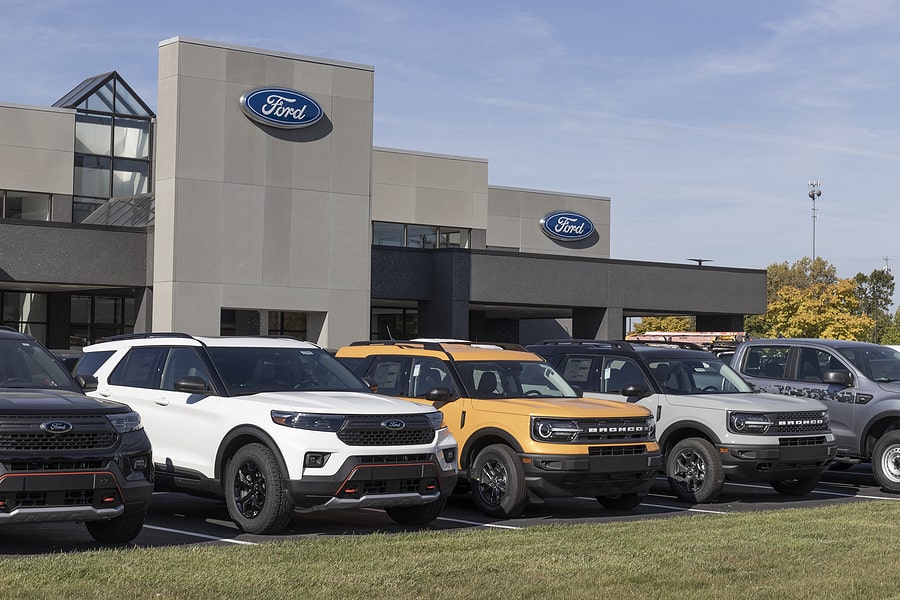
When in the market for a new car, most people just hit the car lot or scroll through the available inventory at their local dealership. If something catches the eye, it’s just a matter of negotiating a price before driving away with the purchase. The thing about car shopping is that it doesn’t have to follow the tried-and-true process.
You don’t have to settle for what’s available if what’s available isn’t what you’re looking for. There is such a thing as factory-direct. People from other countries are quite familiar with the process of a custom order car. It isn’t out of the realm of possibilities here, either. So, let’s talk about how to order a car from the factory.
How Does Ordering a Car Work?
How to order a car can vary slightly from automaker to automaker but usually involves an auto dealership, as someone will inevitably need to handle the paperwork and oversee delivery. Allways Atascosa offers a custom order service for customers. We would be delighted to assist you. Here’s a quick breakdown of the process:
-
Work out the financing.
Before starting the process, you may want to work with your bank or credit union on an auto loan. You can also research the dealership’s financing options if you choose this route. Either will work for a custom order car.
-
Visit the manufacturer’s website.
While some dealerships will do all the work for you, using the “build and price” feature on a manufacturer’s website is always a good idea before working with a sales rep. Going through the process at home can help relieve some of the pressure you might feel at the dealership to decide immediately.
It’ll also give you some time to play around with the various features offered by the manufacturer and get a better idea of the ticket price. Besides, some dealerships want a copy of your design before an appointment. Feel free to call the dealership to see what they’d prefer.
-
Schedule an appointment.
Once you’ve settled on the details, it’s time to contact the dealership to let them know your interest in a custom order car. They may ask you to come right in. Bring a copy of the design, even if they don’t need it. It can be a good reminder of what you ultimately want and can speed up the process.
-
Talk price.
Here’s a little trade secret, you can negotiate “out-the-door” prices on a custom order car. It’s just like any other vehicle purchase, so treat it as such. Discuss what sort of deal they can offer you.
-
Sign the paperwork.
You can sign the buyer’s order if you’re cool with the price. The sales manager will need to do the same — and the reason comes down to price. You want to lock in that agreed-upon price for the car before leaving the lot. Don’t walk away without a signed copy for yourself. A second copy should stay with the sales manager.
-
Bide your time.
Being a custom order car, it will take some time to arrive. But the dealership should inform you where the car is in the process. Feel free to email or call for updates, though.
-
Negotiate the trade-in.
If you intend to trade in your car, it isn’t until your new car arrives that you’ll negotiate the price for your old vehicle. Research to arrive at a fair market value for your car. You may not get that, but it can be a good negotiation starting point.
How to order a car from the factory isn’t that complex of a process. Nor does it take all that long — other than waiting for the delivery. Contact us today to learn more about the process or have additional questions. A member of the Allways Atascosa team would be more than happy to talk you through the custom order process.
Why You Shouldn’t Ignore Warning Lights on Your Car
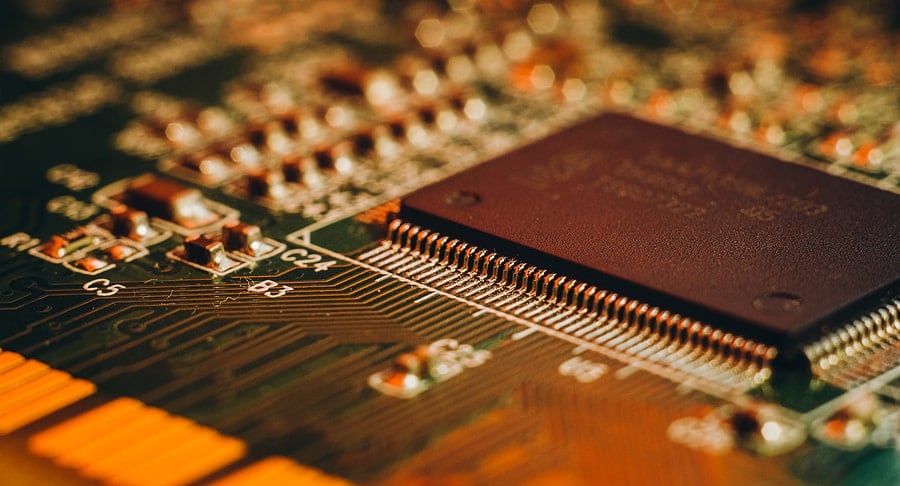
Chances are, you’ve seen it before. You were driving around and everything seemed fine until one of those pesky lights popped on in your car. Different people have different reactions to this. Some take their vehicle to the mechanic, while others simply ignore it. Is there a right way? Is there a wrong way? We’re here to tell you there is a right way to go about things.
Those pesky little lights are there for a reason. If one of them —any of them —pops up, you probably ought to take your car to a mechanic. After all, they exist for a reason. They let you know when something is going wrong or could go wrong. And playing with your safety when you are driving is not something that you should do.
In this guide, we’ll explain the warning lights on car meaning, and anything else you might need to know if one of your warning lights pops on. Various warning lights can turn on in your car, but what do they all mean? Read on to see a list of what each light means and what to do about it.
Check Engine Light: What It Means and What to Do
This may be the light we are most familiar with in our cars. The good news is that it could mean something minor, like a loose oil cap. The bad news is that it could mean something that will cost you a lot of money. Often overlooked or ignored, you should make an appointment with the mechanic if you see this light.
In most cases, even in cases where something is seriously wrong with your car, you are not in immediate danger. However, if you leave your engine unchecked, you could damage parts of your engine that will cost a lot of money to repair.
Check engine light blinking? Take it into the shop right away. Check engine light: Is it solid? It’s probably just a loose gas cap or something else minor. Either way, you should have it checked out.
Antilock Brakes Light
If your ABS (anti-lock brake system) light goes off, there is a better chance than a check engine light that something is wrong with your car. It could mean that your brake fluid is low. It could mean something is wrong with the mechanical systems that help your car stop. Whatever the case, get to the mechanic ASAP.
Engine Temperature Light: Why It Matters
We all know the little gauge that reads hot or cold, but when your engine is in danger of severely overheating, this light will turn on. There are no two ways about this; if you overheat your engine, you are likely doing costly or irreparable damage, which could total your car.
Oil Pressure Light: What You Should Know
This light could mean a few things. You might be low on oil, have broken reading mechanisms, or have engine problems. Whatever the case, this is one of those warning lights that you want to heed immediately. If you see this light, don’t wait to call a mechanic. Pull over and call a mechanic on the spot. Indicator light car problems can happen quickly.
Tire Pressure Light: Causes and Fixes
This could mean one of two things, but they generally go hand in hand. It could either mean that one of your tires is way too low or too high concerning tire pressure or that the balance is off among all your tires. The third option is a faulty gauge. This one is easy enough; pull into a gas station, check the pressure on your tires, and adjust accordingly. And, of course, make an appointment with your mechanic.
All Warning Lights on What to Do Next
You would think that when all warning lights came on in car while driving that it would be the most serious of issues. However, it is not. This commonly means there is a problem with your alternator or charging system. Chances are this won’t cause you issues immediately, but you want to get it checked out ASAP.
If you have more questions about warning lights, please contact Allways Atascosa Chrysler Dodge Jeep Ram today!
Is the Car Chip Shortage Better?

It’s no secret that the pandemic affected the auto industry in ways that no one could have imagined. One of the ways we’ve seen this is in the shortage of semiconductor chips. This is a problem because these semiconductor chips regulate many things your car does, from safety features to power management.
That means manufacturers cannot produce as many cars as they’d like, especially in high demand. The problem is that these semiconductor chips weren’t just used in vehicles and other technology. So, there was a shortage of semiconductor chips, and the auto industry couldn’t get its hands on them before other tech industries.
This led to a shortage of new cars. It is a problem that has persisted ever since the pandemic. When will new car shortage end? Here, we will discuss today’s semiconductor chip shortage and whether the situation is improving.
Where the Car Chip Shortage Stands Now
The question is whether the chip car shortage is getting any better. The answer is, fortunately, yes. However, we have yet to see if chip production will lead to auto manufacturers getting these new chips. All signs point to yes, though, so we should see an increase in product and a price decrease.
Unfortunately, the timing isn’t exactly great. Buyers are less likely to spend big chunks of cash on a new car with a recession looming. Is this good for the used car business? Absolutely. But it isn’t beneficial for auto manufacturers, who have seen a significant hit to business between 2020 and 2022. A new supply of new cars could be great news for consumers scared away by the threat of a recession. Chances are that dealers will want to price their vehicles to sell.
The New Car Problem
You also must consider just how many of these semiconductor chips are used in cars, and then you might better understand why there was a new car chip shortage.
It wasn’t until the late 1960s that cars even had chips. In those times, cars were 100% mechanical. This means that even once chips were introduced, they took a while to become commonplace in the automotive industry. Now, a new car can have up to 3,000 chips in it. When you consider how many chips it requires for a smartphone or a gaming system, it makes sense that they were better able to keep up (they still had their supply chain issues) than the automotive industry.
Avoiding the Blow
The two manufacturers hardest hit by the chip shortage were Ford and Chevrolet, with Volkswagen and Toyota not too far behind all car manufacturers. Millions of cars were scheduled for production that never got made. You can only imagine what that would do to a market.
This is why the used car market became popular during the pandemic and over the last few years. However, there has also been a supply chain issue here, simply because so many people rushed to the used car market.
There were some models of cars, though, that managed to avoid the stoppage of production. If you’ve been wondering which cars are not affected by chip shortage, well, here’s your answer:
- 2021 Hyundai Sonata
- 2021 Jeep Compass
- 2021 Nissan Titan
- 2021 Nissan Altima
- 2021 Ram Classic
- 2021 Nissan Centra
- 2021 Ford Expedition
There are reasons that these cars were available during the height of the chip shortage. One reason is that so many are already on the market. Think about the Altima, for example. Pretty much anywhere you go, you’re bound to see a bunch of Altima’s driving around.
Another reason is that some models use fewer chips than others. It would make sense that a manufacturer would create as many cars as possible while still preserving their stock of the highly sought-after semiconductor chip.
If you want to learn more about the chip shortage, please contact Allways Atascosa Chrysler Dodge Jeep Ram today!
How to Best Prepare Your Car for Trade-In
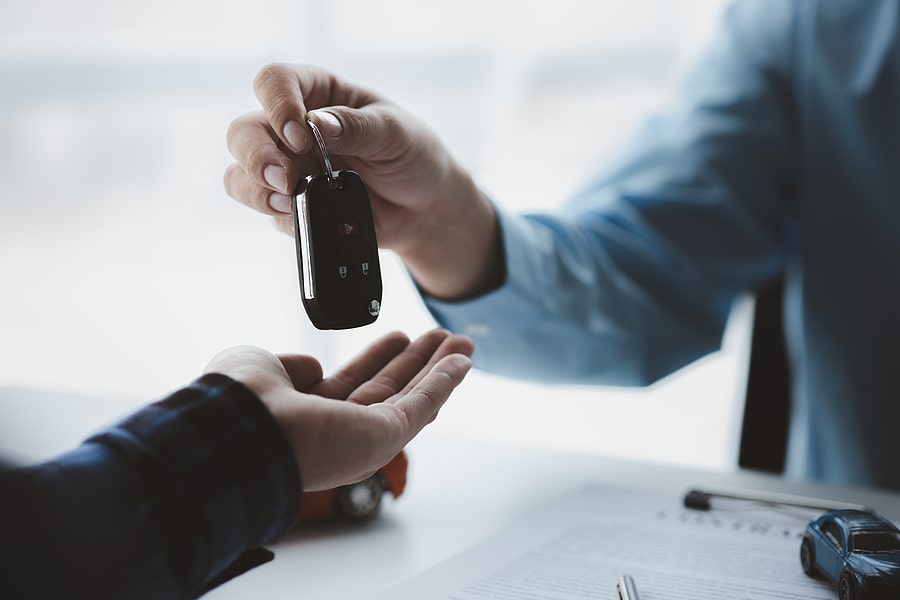
If you plan on trading in your car, it’s important to take specific steps to prepare it first. You may think your car is clean and in good condition. However, there is often room for improvement, and forgetting something important is easy. The following steps will help you maximize your vehicle’s trade-in value towards your next car, ensuring you get the dealer’s best possible offer.
Detailing the Interior and Exterior
If you intend to trade in a car, start by thoroughly cleaning your vehicle. Dirt and mess accumulate over time and it’s easy for this to add up, often without you realizing just how messy your car is.
- Wash the car inside and out, including the wheels. If you have any stubborn stains or marks on the exterior, use a clay bar to remove them.
- Use a wheel cleaner and a tire shine to make the wheels and tires look new.
- Remove all the trash and clutter from the interior, and vacuum the seats, carpets, and floor mats. Clean the dashboard and seats with an upholstery cleaner. Use a microfiber cloth to clean the surfaces.
- Use an odor eliminator to remove any unwanted smells from the car.
- Clean the windows inside and out using a glass cleaner.
- Check that the headlights and taillights are clean and fully functioning.
- Use touch-up paint to cover up any scratches or dents.
- Finally, to prepare car for trade in, remove any personal items from the vehicle, such as photographs, valuables, CDs, GPS devices, and other accessories.
Addressing Minor Repairs
If you’re wondering how do trade ins work, then the simple answer is that the better condition your car is in, the higher value it has. It may be more expensive to fix big problems, and you’re unlikely to recover large repair expenses, but more minor issues may cost less than the increased value they add to your trade-in, helping you get more towards a new car.
- Take your car to a mechanic for an inspection. This will help you find any problems that need to be fixed and give you an idea of the cost.
- If the inspection reveals any mechanical issues, such as problems with the engine or transmission, get them fixed before trading in your car.
- In case of scratches and dents, fix them. This can help you get a better price and make a good first impression on the dealer.
- If parts of your car are worn out, such as tires or brakes, replace them before trading in your vehicle.
Preparing Your Trade-In Documentation
Collect all the documents related to the car. The requirements may differ slightly from one dealership to another but generally include the following:
- Vehicle Title: To prove ownership of the vehicle.
- Registration: This shows that the car has been registered with the state. Make sure this is current and up-to-date.
- Loan Information: If you still owe money on your car loan, you must provide the dealer with information about the loan, including the name of the lender, the loan account number, and the amount owed.
- Valid Identification: A document, such as a driver’s license, is required to verify your identity.
- Service Records: These could be maintenance or repair receipts. It’s helpful to bring them with you to the dealer. They can show that the car has been well-maintained.
Getting a Professional Evaluation
An appraisal from a third party will help you in the following ways:
- An assessment will help you determine the actual value of your car so that you can negotiate a fair price with the dealer. The appraiser will consider the car’s age, mileage, condition, and market demand to calculate its value.
- If the dealer offers you a price lower than the appraised value, you can use the appraisal to back up your argument for a higher price.
- You can avoid wasting time negotiating with dealers unwilling to offer a fair price. Instead, you can focus on the best place to trade in a car, where the dealers are willing to pay a reasonable price based on the appraisal.
Whether you’re trading in your car or just looking for a new or additional car, Allways Atascosa has the expertise to help you find the right vehicle.
4 Signs Your Car Needs New Tires
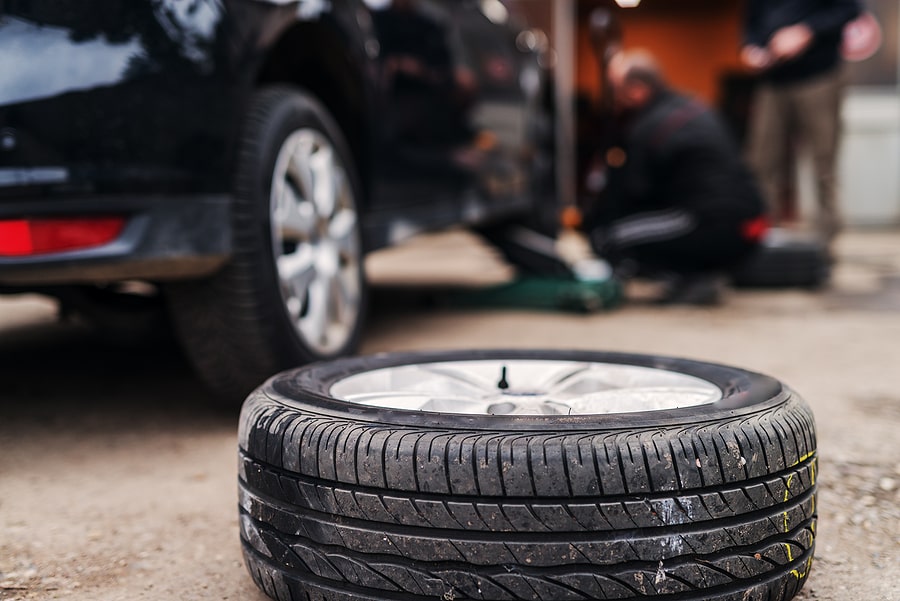
There are lots of things we put off in our lives. However, replacing tires shouldn’t be one of them. Waiting can put you at greater risk of having an accident, lower your vehicle’s performance, and lead to increased costs of repairs or replacements. You will also break the law if your tires don’t meet the minimum tread depth. Here are four signs to look out for that your tires could need replacing.
-
Insufficient Tread Depth
If there is little or no tread on tires, this can be dangerous, particularly on wet surfaces. The minimum should be 1.6 mm, but if you often drive in the rain and other harsh conditions, you should aim for twice that. Otherwise, you will experience longer stopping distances, which increases your chances of an accident.
Low-tread tires can also mean a higher chance of punctures and blowouts, besides reducing fuel efficiency. One simple way to check the tread on older tires that don’t have tread wear indicator bars is to use a penny. If you insert this between the grooves (with the head facing down), you can still see Lincoln’s entire head; the tread is too low and you need new tires.
-
Uneven Wear on the Inside
If you notice the tire tread worn on inside of the tires, it could be time to replace your tires. However, if this happens regularly, you might benefit from speaking to a professional and ensuring your new tires are fitted correctly and that your wheel alignment is proper.
Avoid driving with tires in this condition because it could lead to steering and suspension problems. It may be tempting to drive short distances, but it’s not worth the risk to you and your family’s safety.
The issue could also be a puncture causing the misalignment. It could also be caused by the toe settings going out of alignment or worn ball joints. Unless you’re skilled in fixing these types of issues, it can be quicker and more cost-effective to have a professional fix the problem, and you can avoid making it worse.
This should make your new tires last longer and make your vehicle safer.
-
Excessive Vibration While Driving
There will always be some vibration while driving. However, too much wear can indicate you need new tires, especially if this often happens, even when you’re not driving on rougher terrain.
Continuing to drive when there’s too much vibration can cause severe tire damage, but there are other problems you should check for before buying new tires. Too much vibration could be caused by brakes that need to be fixed, broken motor mounts, worn-out parts, low levels of transmission fluid, or problems with your suspension system.
Tires needing replacement are just one possibility out of many others. So if you’re asking yourself, “When do I need new tires? It helps to get your car looked at by someone qualified to look for all the possibilities, including those you may have overlooked.
-
Cracks or Bulges in the Tire
Cracks or bulges in your tires are a serious safety concern and can put you at risk of a tire blowout while driving. Exposure to the elements, like sunlight and extreme temperatures, can cause cracks, weakening the tire’s structure. Bulges can be caused by impacts, such as hitting a pothole or curb. Cracks and bulges can cause a loss of air pressure and affect the tire’s performance.
If you notice any cracks or bulges on your tires, it’s important to replace them immediately. Driving on damaged tires can increase the risk of an accident and cause further damage to your vehicle. Regularly inspecting your tires for any signs of damage is essential for your safety on the road. If you’re unsure about the condition of your tires, it’s always best to have a professional mechanic inspect them to ensure your safety.
Regularly checking your tires will help you notice any potential problems. Whether you need tires, new parts, a service for your vehicle, or a new car, Allways Atascosa will be happy to help you.








